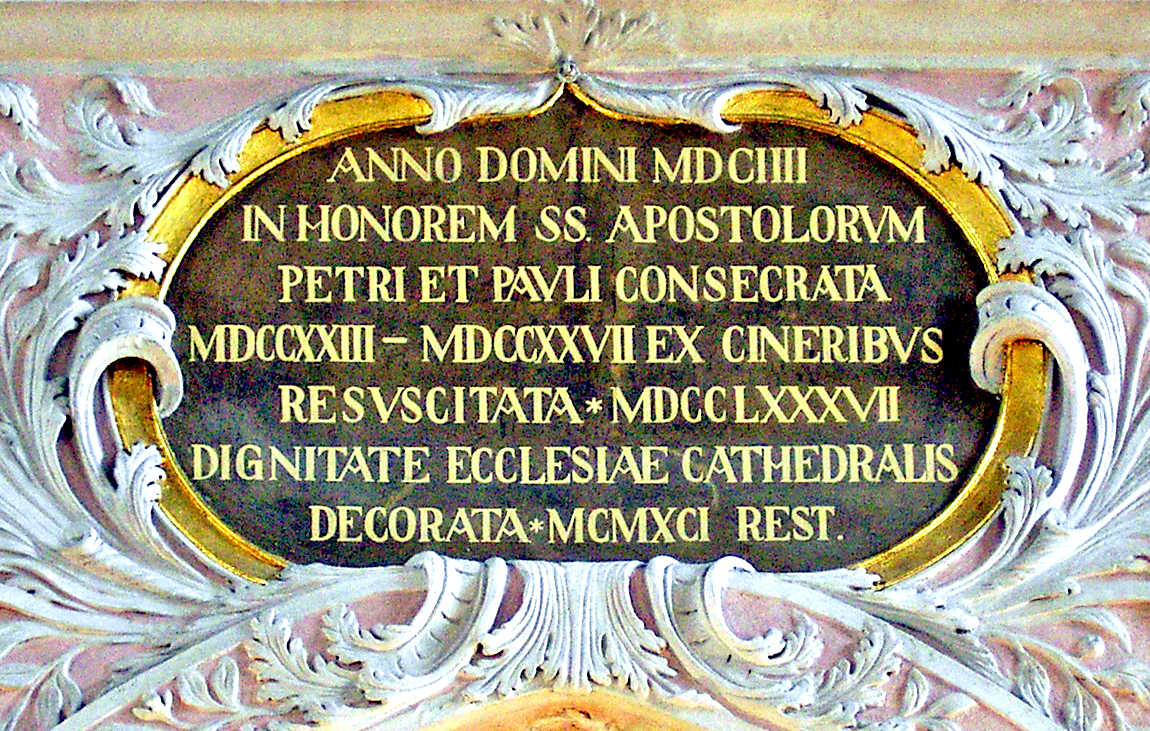|
A.D., B.C. & B.C.E.
Please use our A-Z to navigate this site or return HOME
|
|
|
|
|
ANNO DOMINI - In the year of our Lord. Inscription at Klagenfurt Cathedral, Austria.
How do we measure time? Whether going backwards in time (history), or forward for planning important events, it helps us to know where we are in time. Historians use time to plot the development of man, record battles, births and deaths. Scientists need to be able to measure time accurately to know where the planets are, and earth in relation to the sun. The Global Positioning System sets new demands on the micro measurement of time, to enable accurate navigation.
Most people use diaries and/or calendars to plan our daily routines and appointments. But wHere do we begin? How did we get our calendars?
THE JULIAN CALENDAR
The Julian calendar, proposed by Julius Caesar in AUC 708 (46 BC), was a reform of the
Roman calendar. It took effect on 1 January AUC 709 (45 BC), by edict. It was designed with the aid of Greek mathematicians and astronomers such as Sosigenes of Alexandria.
The Julian calendar has two types of years: a normal year of 365 days and a leap year of 366 days. They follow a simple cycle of three normal years and one leap year, giving an average year that is 365.25 days long. That is more than the actual solar year value of 365.24219 days (the current value, which varies), which means the Julian calendar gains a day every 128 years. For any given event during the years from 1901 to 2099 inclusive, its date according to the Julian calendar is 13 days behind its corresponding Gregorian date.
ANNO DOMINI
An Eastern-Roman monk named, Dionysius Exiguus, was the inventor of Anno Domini (AD)
dating system, which is used to number the years of both the Gregorian calendar and the (Christianised) Julian calendar, introduced by
Julius
Caesar. Almost all churches adopted Exiguus's 'computus' for the dates of Easter.
CE AND BCE
BCE, along with CE, were said to have been developed so as not to be connoted purely on Christian origins. The usage of BCE is thus a show of respect to non-Christians, who don’t believe in Christ, or who do not know who or what Christ is.
Where the use of the term BC was actually coined by Dionysius Exiguus in 525BC (Before Christ), this was the undisputed notation only until recently, when several movements came forth that challenged the BC - AD notation. The reason why they started to question the original notation, is because it was already scientifically measured, using the most accurate technologies, that Christ was actually born sometime in the BC era (7-4 BC). Therefore, why was Christ already born when the supporters of the BC AD notation claim that Christ’s birth represents the year one of AD? This actually renders the meaning of AD (birth of Christ) obsolete.
REFERENCES
https://
|
|
|
Please use our A-Z to navigate this site or return HOME
This website is Copyright © 2022 Cleaner Ocean Foundation & Jameson Hunter. The rights of Jameson Hunter and Cleaner Ocean Foundation to be identified as the author of this work has been asserted in accordance with section 77 and 78 of the Copyright Designs and Patents Act 1988. This website and the associated Cleopatra artwork is Copyright © 2022 Cleaner Ocean Foundation and Jameson Hunter. This is a work of fiction. Names and characters are the product of the authors' imaginations, and any resemblance to any person, living or deceased, is entirely coincidental.
|




